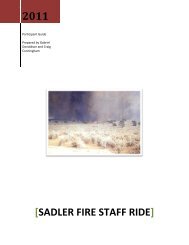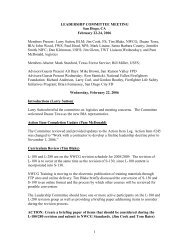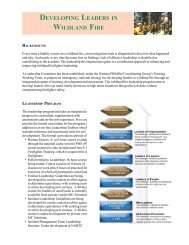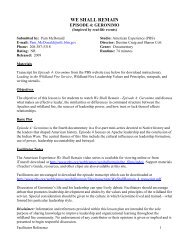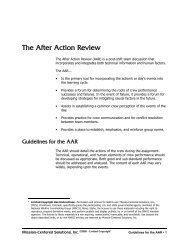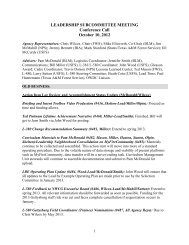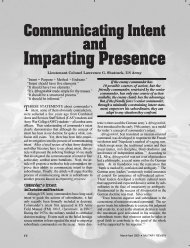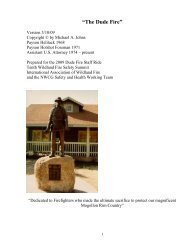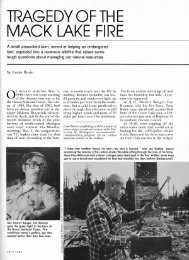Thirtymile Fire - USDA Forest Service
Thirtymile Fire - USDA Forest Service
Thirtymile Fire - USDA Forest Service
Create successful ePaper yourself
Turn your PDF publications into a flip-book with our unique Google optimized e-Paper software.
Appendix: <strong>Fire</strong> Behavior<br />
Entrapment Phase (from 3:20 p.m. to 5:00 p.m. July 10th)<br />
At 3:20 p.m. the fire began uphill crowning runs from base of east slope. Slopes of nearly 100%,<br />
dense forests, and upslope convective winds combine to move this fire uphill at approximately<br />
1.25 miles per hour (100 chains per hour). Spotting was pervasive from all active portions of the<br />
fire both in the canyon floor, and up the east slope. The fire established a convection column on<br />
the hillside east of the canyon floor. Spot fires became established east of the road 0.4 miles<br />
<strong>Fire</strong> Area<br />
3:20 p.m. to 4:40 p.m.<br />
Road<br />
Entrapment Area<br />
Chewuch River<br />
Point of <strong>Fire</strong><br />
Origin<br />
N<br />
from the main fire area.<br />
<strong>Fire</strong> Behavior Figure 4. <strong>Thirtymile</strong> <strong>Fire</strong> Spread 3:20 p.m. to 4:40 p.m. July 10 th<br />
Within an hour the fire in the canyon floor began a sustained torching run in tree crowns and at<br />
4:34 p.m. crossed the road at the entrapment point. The up canyon spread of the fire up to this<br />
point had been parallel to the road. With a 90-degree turn in the road to the SE, the orientation<br />
of fire spread was now directly perpendicular to the road.<br />
A variety of sites and fuel types describe conditions within the Chewuch River canyon. This<br />
difference is significant, insofar as it may have influenced tactical decisions as the fire moved<br />
between fuel types through July 10. At the point of origin, where the fire was first attacked,<br />
spruce and alder dominate the site within a riparian zone. Aspen is also nearby. This is a wetter<br />
site relative to the drier surrounding areas where fir, lodgepole, and ponderosa pine occur and<br />
57



